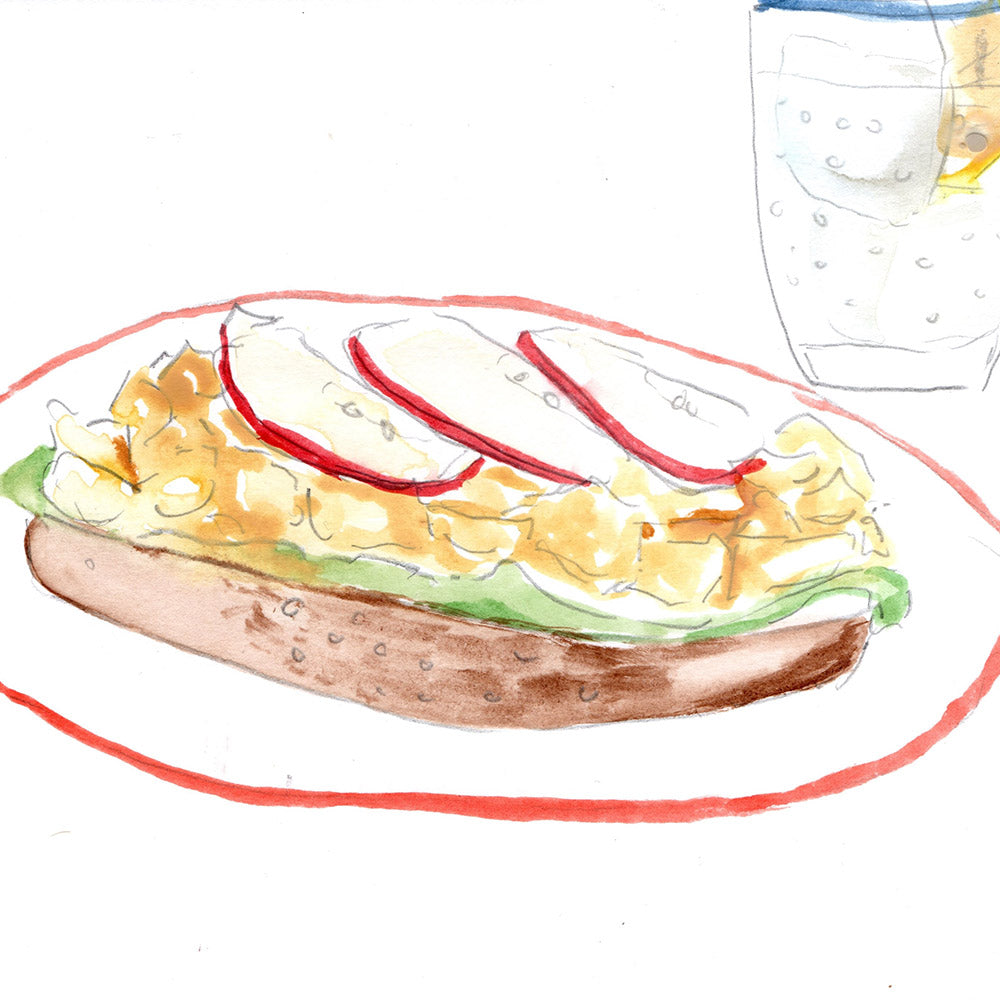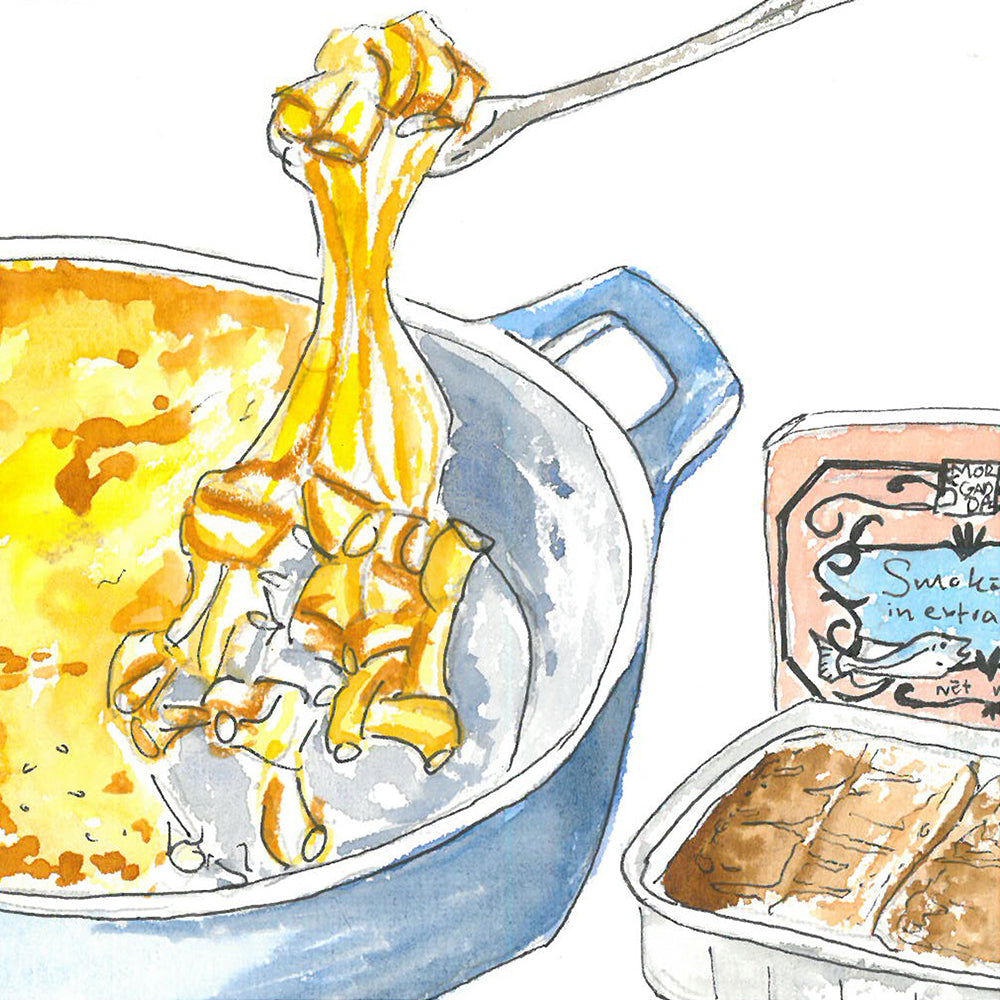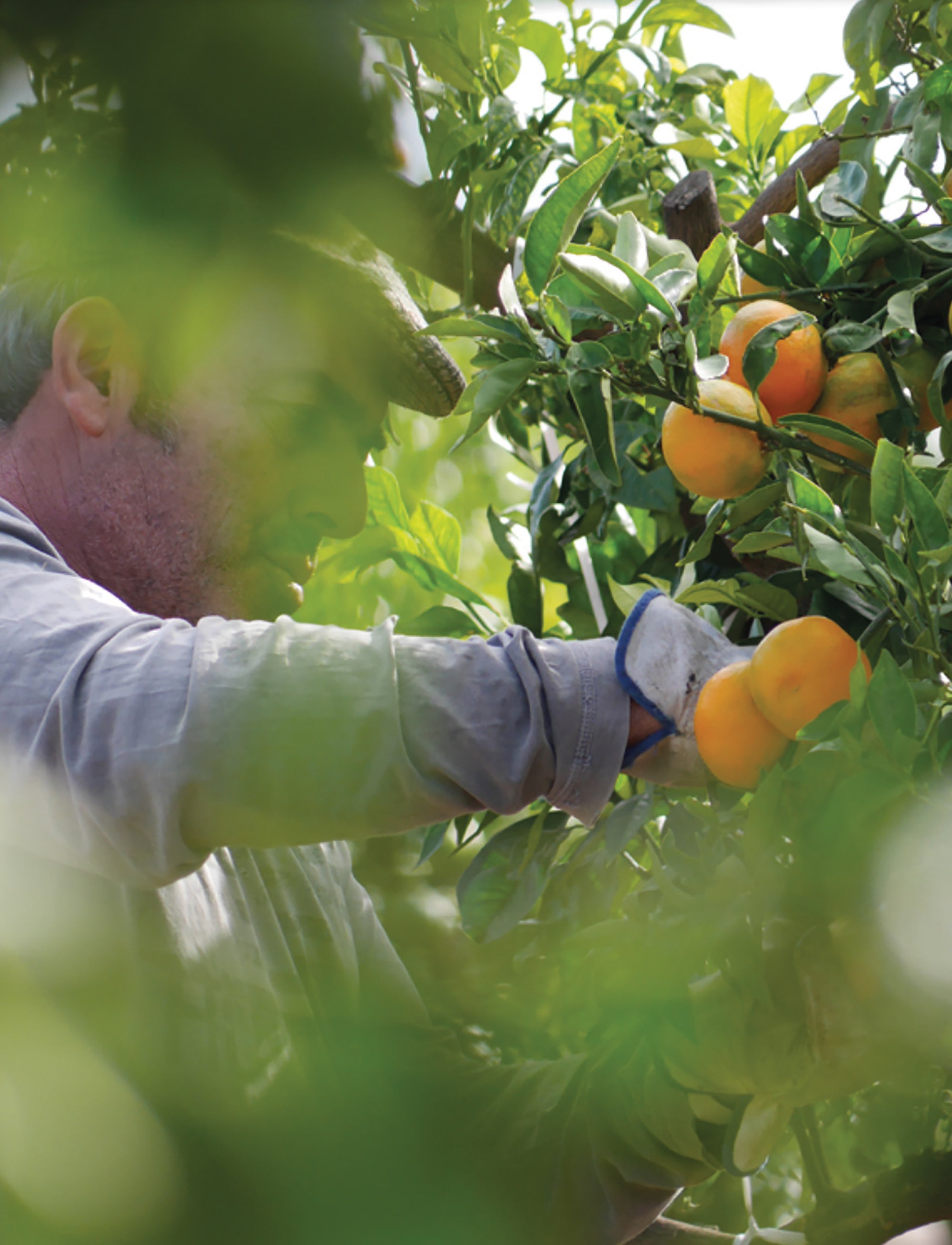I fantasise about peculiar things. In idle thoughts that imagine my version of a life well lived for me, my fantasies aren't overly flashy but are instead unusually mundane and specific. One example is my existential desire to be a serial napper, capable of snoozing anywhere and in any circumstance, prompting my legion of fantasy kids to yell out ‘Mom! Dad is asleep on the lawn again!’ The paradox of this quiet dream is that my biology seems incompatible with napping, with only being able to fall into the still-conscious level peeking beneath wide-awake alertness.
Another modest fantasy that is beyond me is growing a humble few set citrus trees in my back garden. It’s a particularly delicious pipedream that depicts me waking up at dawn and heading out to my back porch with a steaming cup of coffee in my hand. Under the sun's honey rays, I lord over a row of five or so bulbous citrus trees, so pleased with myself and these globes of yellow and orange that I laugh that deep, bellyful laugh that you only imagine comes from Buddhist monks who have just achieved enlightenment. Guffaw would be the right word. In this dream, I am a guffaw-er.
These thoughts can get out of hand and sometimes take a less wholesome turn. The clouds darken and swarm the early hours and I imagine a citrus-scarce world where only I have access to delectable oranges and mandarins and I've become a kind of citrus baron who cackles in the faces of farmers market shoppers who for the life of them can't get their hand on a single nectarine. And I walk my grapefruit on a leash around the neighbourhood like a pompous pet owner and you better believe I guffaw while doing so.
As I said, I fantasise about peculiar things.
Alas, I live in Ireland and while it is a country with many charms, its climate is not one of them. So for the time being I am doomed to a napless and groveless life but that doesn’t mean you have to be. I want to live vicariously through you, dear reader and future citrus overlord, and so I, along with Adya Global’s citrus and honey producer Perdine, have put together a guide to growing your very own citrus tree and - should you commit to the hustle - citrus grove. Farmer market shoppers beware.
The Anatomy of Citrus

Most citrus fruits that we’ve had the privilege of eating are the result of hybridisation, with selective inter-breeding between a few select fruits. Three fruits are the ancestors of all citrus and they are still widely available today: the Citron, the Pomelo, and the Mandarin. The citron gave us most of the tartier fruits of the citrus family such as lemons, limes, and the fascinating Buddha’s Hand, a yellow bundle resembling a set of curled fingers. The Pomelo gave us the drier tartiness of grapefruit and sour orange, the latter being the product of hybridisation with the juicy Mandarin, that gave us the delicious Satsuma Mandarin and Blood Orange. The citrus family tree is exhaustive and has more lines of in-breeding than I care to make a joke about but when it comes to growing the trees and cultivating the fruit there are a few commonalities across the citrus world. Our producer Perdine should know, they grow a variety of citrus fruits in the hills and valleys of Valencia, Spain.
Citrus was introduced to Europe around 310 BC and for almost half a millennia the sole citrus fruit on the whole continent was the Seville Sour Orange, a fruit that is far more sour than the oranges our contemporary palettes would be used to. Perdine focus on cultivating Clementines and Oranges, but among those two parent varieties they grow nine sub-varieties. Citrus trees being the evergreen go-getters that they are, grow all year. Yet the ripening stages and harvest dates are scattered throughout the calendar, even among sibling varieties. Two examples would be Clemenules and Ortanique - both varieties of clementine - where the former ripens in early Winter and the latter in late Spring. So you might be asking why am I saying this. Well, I’m doing so to illustrate the point that there are nuances to growing different cultivars. But this guide is to get you driving, not into Formula 1, so before you dominate the citrus-verse with your chosen fruit, you must start with the generalities. And so, below is the anatomy of a citrus tree:
- The Crown: A fittingly regal name, the crown is the tree’s head made of leaves, maybe some flowers, and ideally some fruit.
- Scion: where the branches sprout from the trunk. This is the part of the tree that produces the fruit.
- Graft or Bud Union:
- Grafting is where you insert a shoot – in this case from a citrus tree – into a slit on the trunk or stem of another living plant. This propagates fruit plants and is the primary process of hybridisation. Once this grafted plant begins to grow any growths beneath the newly healed slit are removed to allow the grafted plant to flourish. The graft or bud union is essentially where the old plant and the new plant were bound t. It will often look like a scar or dimple on the tree’s trunk.
- Rootstock: the mound of roots, usually buried beneath the earth. Within the rootstock, there are a variety of roots that go by wrestler-sounding names like the Lateral, the Tap, and the Sinker.
Location – The Birthplace of a Citrus Empire
Citrus cultivation began in Asia, predominantly in China and India. The first records of spreading cultivation were in Micronesia, dated 1500 BC, so it’s fair to say China and India were the hipsters in the citrus world, growing the fruit before it was cool. But fear not, you might be a citrus normie and you might not have bragging rights, but it doesn’t mean you don’t get to build a citrus dynasty of your own. So let’s start with your personal fruit genesis.
As stated before, Citrus loves a warm climate. Perdine is based in Valencia in Spain, a mix of Mediterranean heat and cool coastal breezes that the local trees are positively beside themselves with their idyllic home. Must be nice.

But if you’re like me and live in less than optimal weather you can still cultivate citrus in a way that is more and less convenient than traditionally planting them in warmer climates. More convenient you ask? Sort of. Aspiring citrus growers can leave the citrus tree in a pot and wheel the pot around on a trolley to position the pot and plant in the ideal locations throughout the day. You’ll also need to change out the pot as the tree grows, as most citrus trees are sold in their youth. Plus you can skip most of this guide and settle in the maintenance section.
‘But Elliot!’ I hear you shouting through the screen, ‘I want to be a bonafide citrus tyrant! Do you expect me to wheel around a whole grove worth of trees throughout the day?’ The answer is I do not. Those proletariat trees are working for you my friend, not the other way around. Not to mention you’ll need plenty of sun and a decently sized greenhouse if you plan on growing a few trees. The potted approach is serviceable at a compromise, just remember it’ll need six-to-eight hours of bright sun, use fertilizer, and keep it away from drafts. But again, this is the compromise version, but we both know you're not in the citrus game to make compromises.
Beginning with the general location, citrus trees love to eat up light and space, so the more open and sun-exposed their plant site is the better. Speaking of the sun, the direction you plant your trees is important. You’ll recall the graft union in the previous section, well that area is very sensitive – aren't all unions? - so you want it facing either North or South for a little shade, preventing it from being sun-scorched; as a bald man myself, I sympathise with the bud union’s plight.
You’ll want decent run-off soil that will drain well and you want the soil to be moist rather than wet. When you plant the tree, you'll want the graft union a few inches above the ground, as the soil will settle after a short time, absorbing that lower part of the trunk into the earth. It’ll look low but not to worry, it’ll grow.
Planting – Reap What You Sow (at some point)
Time to get shovelling. You want to dig a hole that is the same depth as the pot the tree is currently in and twice as wide. Once you have the hole you’ll need to evict that tree from its current home. There are two ways you can do that:
- Use a box cutter ve-ry carefully, making sure the edge is not pointing towards you in any way, and slice the pot vertically all the way down. Then peel the plastic pot off. If you purchased or were given the citrus tree in a ceramic pot then save the box cutter method for the sociopath that gave it to you and consult method 2. (Legally I have to say that I do not in any way condone or advise box-cutter violence, even on those that deserve it. Save your rage for the farmer’s market.)
- Hold the tree by the trunk near the graft union and lean the still-potted tree at a 45-degree angle. A little note on trunk safety here: you’re supporting the tree with your hand so it’s important not to yank or allow the trunk to bare the brunt of whatever force you need to exert here. Lightly smack the sides of the pot (harder smacks if the pot is ceramic) to loosen the soil in the pot. Roll the pot a few inches – trunk still in hand – and lightly smack the next section, and repeat until you’ve loosened the soil the whole way around. Remove the tree from the pot, with most of the pulling force happening to the pot, rather than the tree.

This part of the process might agitate the tree a little, resulting in a few fallen leaves or fruit. Not to worry, it’ll bounce back.
Now that the rootstock is exposed you’ll want to help the roots settle into the earth as much as possible. To make things easy on them, agitate the rootstock around the sides of the mound by lightly pulling away clumps of soil and allowing the outside roots to fan out from the rootstock.
Once a few of the outside roots have some space you’re ready to plant the tree in the hole you dug earlier. Put it in the hole – ensuring the tree is straight up – and start filling the soil in around the tree. Every few inches tamp the ground so it's nice and compact. Repeat until you have a small surrounding mound that is only slightly above ground level. Double-check that the tree is still straight-up by standing over it. Give it a deep watering once it's sitting in the ground nicely.
A hustler like yourself will be wondering how to optimise growth and so you might ask me ‘Elliot - my bourgeoise companion, friend and mentor - should I use compost or mulch or should I whitewash the tree to get this citrus tree earning asap?’ I might then remove my pipe and chuckle and place a hand on that exquisite shoulder of yours and say ‘Mulch? Absolutely. 4 inches or so high on the mound and a few inches from the trunk, giving it a little space. Leave the compost for now, let the tree get used to the local soil, then treat it to that sweet compost in about two weeks.’
As for Whitewashing, this is an optional process where you can scatter a chemical mix on your tree – available at your garden store – to protect it from the sun. This is only really recommended for hotter climates. If you want to whitewash your tree, do so before the deep watering that will come next.
Water deeply and generously, allowing water to rush through the soil and push out any air pockets. Pretty soon after this, you'll notice the mound start to settle.
Maintenance – The Juice is Worth the Squeeze
It’s at this point I’m going to have to break your citrus-loving heart for a moment and advise you to remove all fruit from the tree for at least its first season. I hear a gasp travelling along the wind. I know, I know. It’s tragic, but you want the tree to focus all its energy on growing out the roots. You’re not in the game to be a two-bit citrus dealer, you’re in it to be the kingpin, and the citrus empire is all about the long game.
After the first deep watering, water the tree twice in its first week, three if it’s very hot. These subsequent waterings should be lighter than the initial deep one. Water it twice the following week, once a week after that, then maintain the once-a-week schedule in the hotter months and adapt to every two weeks in the cooler months. Though this does depend on your climate and how much rainfall you’ll get. Watering is the biggest thing to be mindful of. Use a moisture detector – also cheaply found at your garden store - and stick it into the soil. You want it to be consistently balanced, not dry and not wet. Over time you’ll start to speak the tree’s language and understand any visual cues it's giving you, this includes the dampness of the soil underneath it.
Other loose pieces of advice would be feeding and pruning. Citrus trees tend to be hungry so using a store-bought feeding solution every two weeks will have your tree singing in Summer and once a month for winter. Pruning could be done once a year, maybe. You’ll know your tree after the first year and you’ll start to notice which branches and leaves are freeloaders and which are high earners for you.
So there you have it my darling clementine, the basic introduction to building a modest kingdom of orange, yellow and green juicy bulbs. I hope your bountiful groves give you all the pleasure I imagine them to give, and when you next taste a juicy satsuma or decadent finger lime, think of your old citrus enthused-pal that wrote this guide.
The citrus world is long overdue a messiah. Don’t leave them waiting.




